Don’t worry, this is not a case of déjà vu, I did indeed review a AAA monitor lizard already. But AAA produced several monitor lizards and this one, although it’s probably the same species as the last one I reviewed, is substantially different. The last time I reviewed one of these I admitted that I was unsure what species it was supposed to be. Thankfully, our resident varanid expert Lanthanotus chimed in with an identification. He believes that lizard, as well as this one, represents either the Bengal monitor (Varanus bengalensis) or the clouded monitor (V. nebulosus). These two species are very similar and were both once lumped together as V. bengalensis.
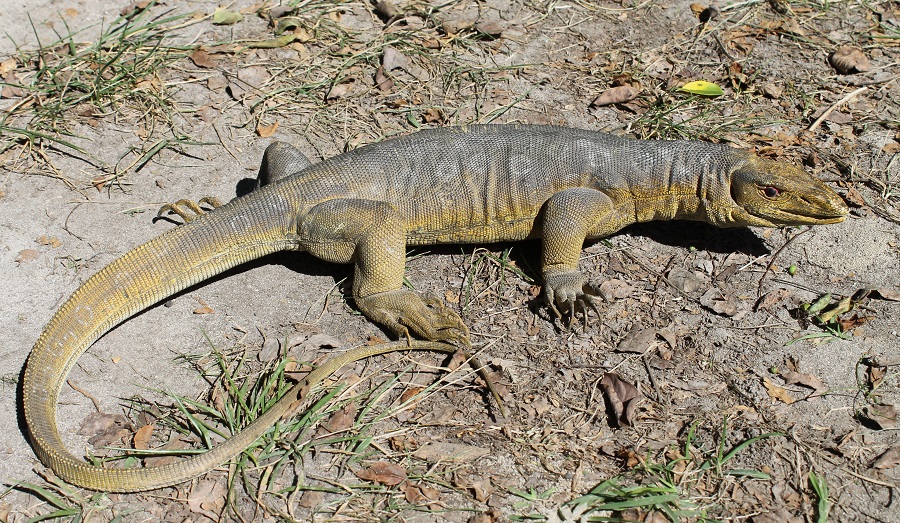
Both species of monitor lizards reach about 5’ (1.5 meters). This AAA monitor lizard measures 34” (86 cm) and although smaller than the maximum size it is within an average size range making it 1:1 scale. Like my previously reviewed AAA toys this lizard is cast from an actual specimen. Although this lizard is smaller than the other monitor I reviewed it is considerably heavier, being solid rubber instead of hollow.
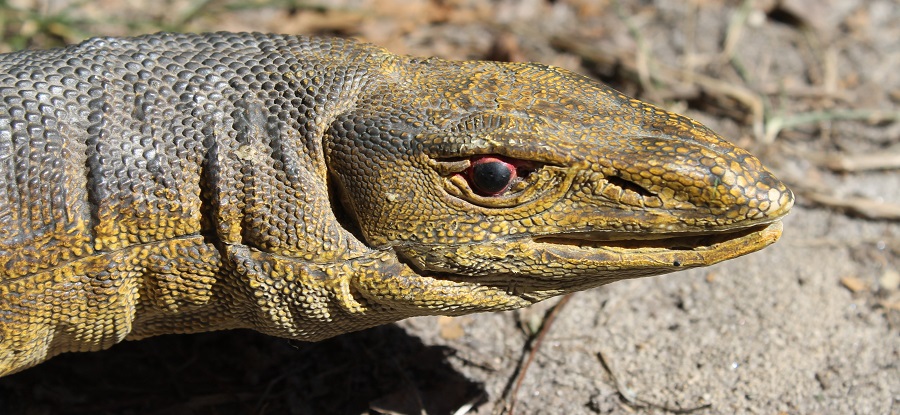
This lizard is among the best of all the AAA lizards. The other monitor lizard I reviewed, although fantastically life-like, has a static and unnatural pose. This one looks much more organic. The toy’s body is curved towards the right, with the head looking rightward and the tail wrapping around towards the right forearm. It depicts the animal doing what many reptiles spend much of their time doing, just basking under the sun.
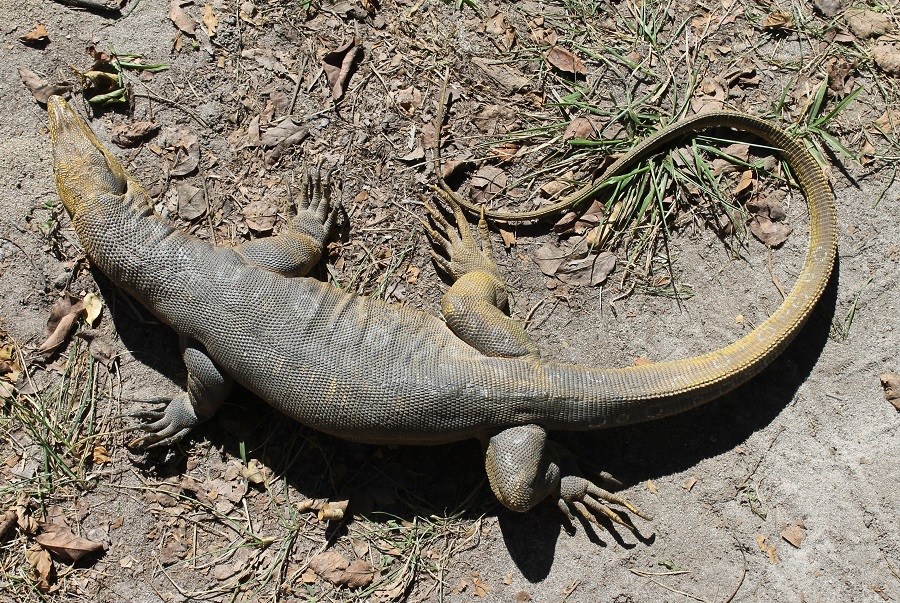
The toy is nicely painted in various shades of brown and it’s quite lifelike in application. It’s darker on the back with lighter shades gradually transitioning on the head and underside of the body. Faint gray circles are painted along the back and the eyes are red with black pupils. Although realistic looking I don’t feel like this coloration accurately depicts what a Bengal monitor would look like.
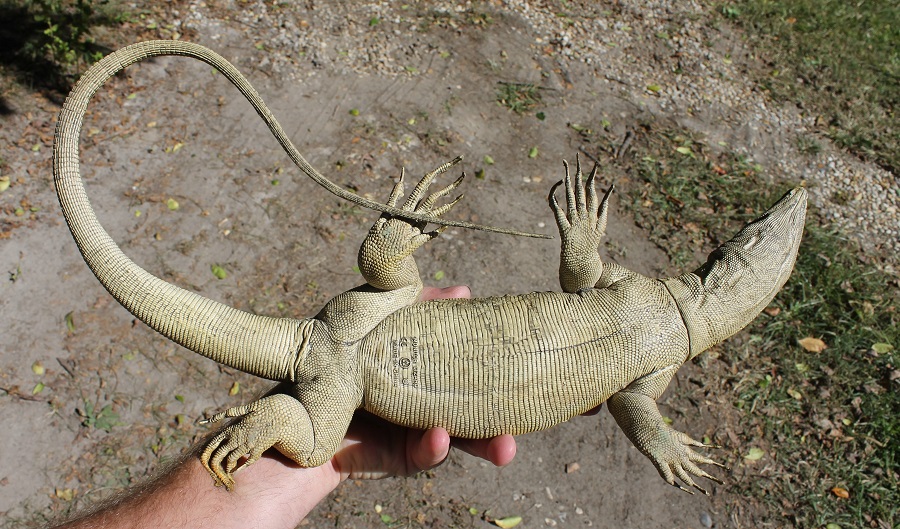
We can still determine what species this is however, not because of the color but because of anatomical features. For example, Bengal and clouded monitors have slit-shaped nostrils that are almost completely horizontal and positioned between the tip of the snout and eyes and that feature was transferred to this toy. This adaptation helps keep the nostrils free of debris while digging. Also, males of these species have a bulbous snout that is also represented here.
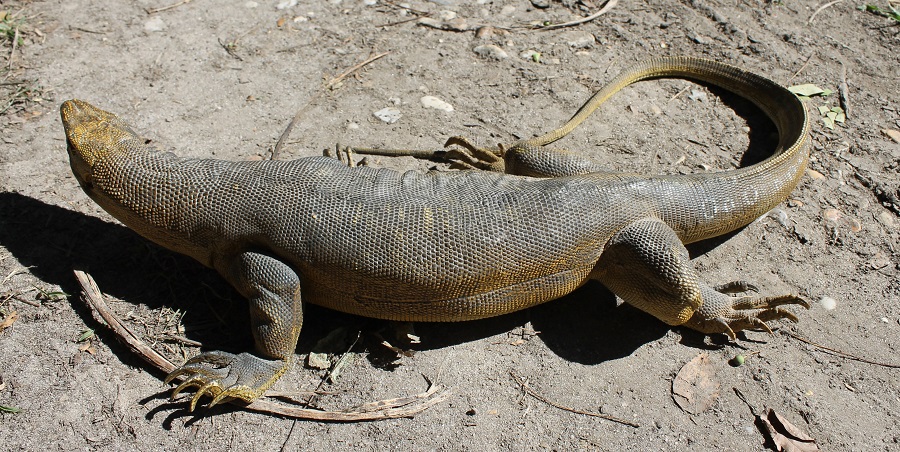
Although these toys are cast from actual specimens it is important to remember that the color of that animal was not transferred. I know that sounds obvious but since these toys are often stamped with vague or even wrong common names it can make it tricky trying to figure out exactly what species they are, and color should not be the only tool in identification. If these toys were cast from wet specimens then there might not be color on the specimen to base the toy on!
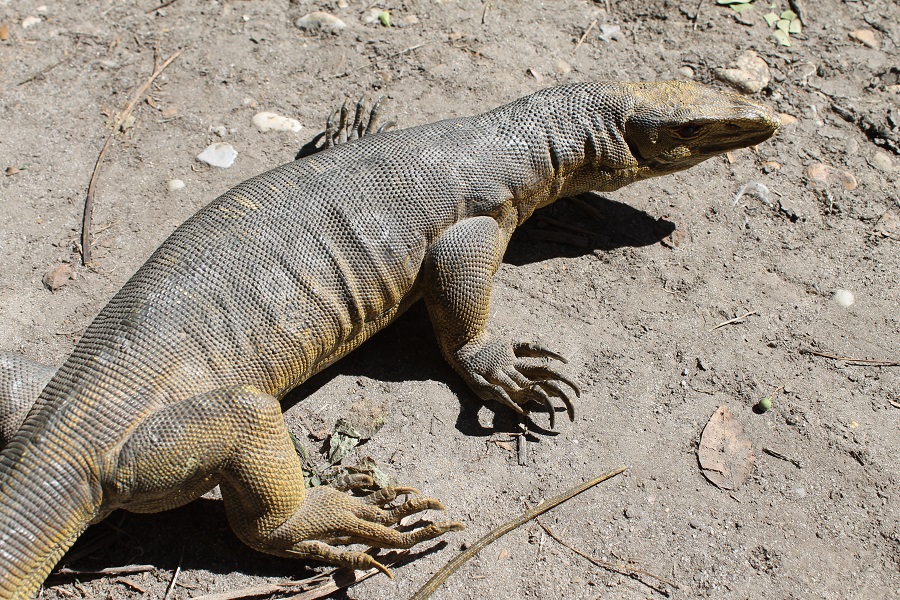
If you’re into life sized toy animals, taxidermy, or museum-quality replicas then I highly recommend this particular AAA toy, more so than the one I previously reviewed. This toy has many potential applications; it’s educational, potentially useful as a prop, and just a cool conversation starter to have sitting around your house. The AAA monitor lizard shows up on eBay from time to time for a reasonable price.
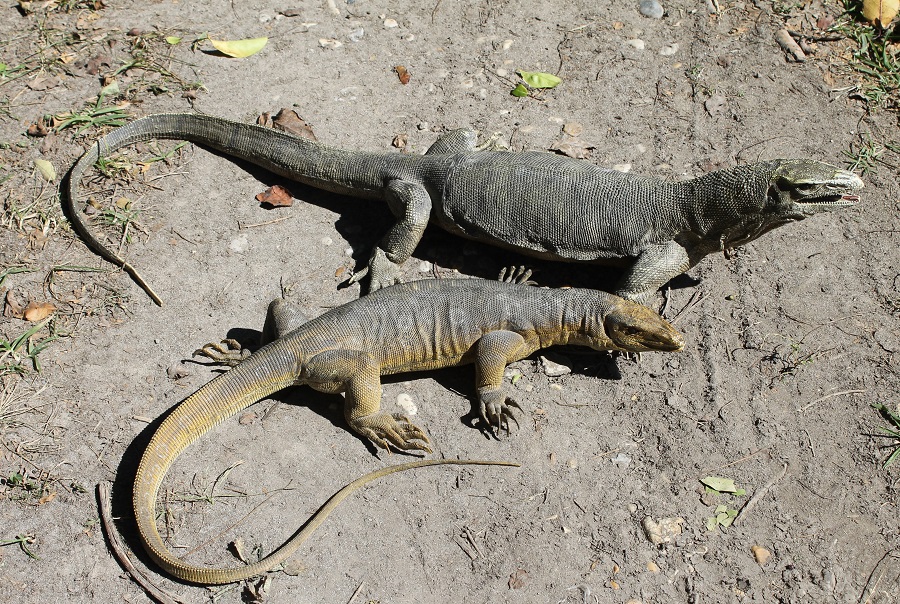
Disclaimer: links to Ebay and Amazon on the AnimalToyBlog are affiliate links, so we make a small commission if you use them. Thanks for supporting us!




I have only seen one of this model once and they are impressive! I’m always amazed when real animals are cast to make figures, it’s as accurate as you can get.
Great review and cool outdoor photos.
We have one in the den at home. Mom thinks it’s older than 1960. Do you know the provenance/manufacturing or date that AAA began manufacturing these?
I don’t know the date these were made but they don’t go as far back as the 60’s, more like the 80’s and 90’s. Maybe the 70’s.